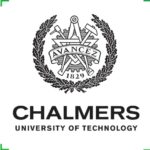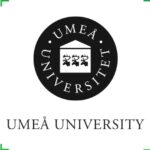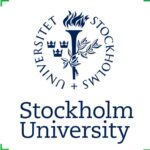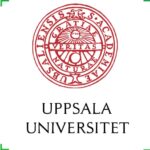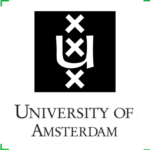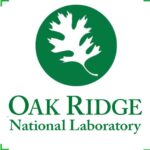Are you a PhD graduate eager to take the next leap in your academic journey? Look no further! Lund University, Scania, Sweden invites online applications for prestigious Postdoctoral Fellowships across a wide range of research fields. Don’t miss out on this opportunity to propel your career forward.
Candidates interested in Postdoctoral Fellowships can check the details and may apply as soon as possible.
(01) Postdoctoral Fellowship Position
Postdoc summary/title:– Postdoctoral research fellow focused on multimodal analyses of biomarkers in Alzheimer’s disease
This is a unique opportunity for a postdoctoral researcher to join the teams at both the research group for Clinical Memory Research at Lund University (Sweden), and the Barcelonaβeta Brain Research Center (BBRC), Barcelona (Spain). We study the biological processes behind Alzheimer’s disease (AD) and other neurodegenerative diseases. We work with cohorts of patients and cognitively healthy volunteers, who undergo extensive testing with brain imaging, biomarker measurements and neuropsychological testing, as well as animal and cell biology experiments. The research in Lund is led by Professor Oskar Hansson and the research in Barcelona is led by Dr Marc Suárez-Calvet. You can read more about the research in Lund here and the research in Barcelona here. The position is located at the BioMedical Center (Lund University)
Deadline : 17.Nov.2024
(02) Postdoctoral Fellowship Position
Postdoc summary/title:– Post-doctoral fellow in biodiversity assessment for business and finance
New pathways are needed for an efficient alignment of the financial system with the needs of biodiversity. This postdoc links efforts of the research project BIOPATH to assess, co-develop and test existing and novel approaches for integration of biodiversity considerations into financial decision- making with financial actors, and analyse the institutional and policy implications of potential transition pathways. The postdoc will focus on characterizing and assessing current approaches used to link biodiversity to business decisions to evaluate their usability and validity. The results will be used to produce a roadmap for development of assessment tools. The work requires an understanding of how the use of biomass in green sectors may affect multivariate biodiversity and associated values, as well as an understanding of how business decision in the green sector may translate into impact on land-use. Work is carried out in close collaboration with stakeholders.
Deadline : 14.Oct.2024
View more Postdoc Positions Click Here
(03) Postdoctoral Fellowship Position
Postdoc summary/title:– Post-doctor in environmental law with a focus on marine environmental law
The discipline of environmental law encompasses those parts of legal system (international, regional and national) that aim to regulate the environment and pursue ecologically sustainable development in a broad sense. This includes, inter alia, protection of (parts of) ecosystems (ocean, water, air, land, species, biodiversity etc.), the production, use and disposal of chemicals, goods, waste management and transport, mitigation and adaption measures in the context of climate change, as well as a host of procedural and institutional issues that directly affect the effectiveness of environmental law. Further, the topic includes issues concerning the efficiency and adequacy of the legislation in relation to the purpose of environmental protection, including control, sanctions and instruments for voluntary action, the balancing between the need for environmental protection and competing interests, access to justice and the design of legal proceedings.
The post-doctoral position is situated within the project titled “Sustainable Carbon Capture Transportation and Storage: Liability and Governance in Light of International and EU Law.” It addresses the emerging practise of mitigating greenhouse gas emissions through innovative carbon capture and storage (CCS) technologies. With a special focus on the sub-seabed storage of CO2, this project explores the legal frameworks and governance structures necessary to manage risks and long-term environmental liability of carbon storage in the sub-seabed. Identified risks include, for example, leakages during transportation and injection phases as well as migration and releases from sub-seabed geological formations, and risks associated with site closures and post-closure management.
The project is in the field of environmental law, more particularly marine environmental law, and therefore also involves issues of international law and EU law.
Deadline : 13.Oct.2024
(04) Postdoctoral Fellowship Position
Postdoc summary/title:– Postdoctoral position in System Reliablity Analysis of Timber Structures
The research subject is the system reliability analysis of timber structures, addressing the complexities of multiple components, connections, and failure modes. Specifically, the role of joints in relation to the overall structural integrity and system failure probability will be investigated. Given the computational demands of system reliability analyses, it is essential to use computationally efficient methods such as meta-modeling and importance sampling. Based on the research results, recommendations for designing timber structures to enhance their reliability and safety will be developed. The research subject is related to a FORMAS project and is organized in close collaboration with the Technical University of Dresden, Germany, and the EMPA, Zurich, Switzerland.
Deadline :07.Oct.2024
(05) Postdoctoral Fellowship Position
Postdoc summary/title:– PostDoc in the RIXS Team (2-year position)
Deadline :06.Oct.2024
(06) Postdoctoral Fellowship Position
Postdoc summary/title:– Postdoctoral position in food technology, plant proteins in food products
To release the potential of plant proteins and fully exploit their different functional properties in different food products we need a better understanding of how the extraction process, protein separation steps and further formulation and processing affect the proteins. Careful mapping of the properties of pea proteins from Swedish crops (yellow pea) can give insight in how these can be best used to realise complex products such as milks, yoghurts, spreads, foamed products and gelled products. The albumins and globulins have distinctly different properties and devising methods to use each protein fraction to its best performance, and combining the separated proteins in a smart way may be a key to unravel the full potential of these proteins.
Deadline : 04.Oct.2024
Connect with Us for Latest Job updates
(07) Postdoctoral Fellowship Position
Postdoc summary/title:– Postdoctoral fellowship: Understanding and optimizing mRNA therapeutics
We seek a highly motivated postdoctoral scientist with strong competence in data analysis to carry out structural analyses of a variety of mRNA lipid-based nanoparticles (LNPs) systems using small-angle scattering (SAS) techniques (both neutron and X-ray) alongside cryo-electron microscopy (cryo-EM) studies. The position will be held in the Molecular Biophysics group in the Medical Faculty at Lund University, in close collaboration with CureVac in Germany.
The development of mRNA LNPs has intensified in the past years, particularly fueled by the SARS-CoV-2 pandemic. Beyond the treatment of COVID-19, LNP technology enables gene editing, protein replacement therapy and therapeutic cancer vaccines. Nonetheless, there are numerous challenges associated with the formulation, delivery, and efficacy of mRNA-LNPs to date. Despite the various advancements in the field, many aspects of the structure-activity relationships in LNPs still remain to be elucidated.
CureVac, a biotechnology company based in Tübingen, Germany (https://www.curevac.com/en/), has been a pioneer in the field of mRNA research for the past 24 years. The successful delivery of mRNA in vivo is contingent on the LNP delivery vehicle. This project aims to delve into the lipid-based building blocks which make up the LNP, utilizing powerful structural tools to investigate structure-activity relationships that will enable the future efficient design of potent mRNA LNP therapeutics. CureVac has been focusing on innovations in the lipid space for the design and in vitro/in vivo characterization of novel LNPs and the identification of factors that can significantly improve potency following intravenous administration.
The project will make extensive use of synchrotron X-ray facilities such as MAX IV, ESRF, Diamond, and neutron beam facilities such as ILL, ISIS (as well as the ESS spallation neutron source which will become available during the period of the project). Data from these facilities will be used with information from cryo-EM to establish reliable structural models associated with different types of LNPs and their variation in response to different conditions. Where appropriate, isotope labelling will be exploited to enhance the visibility of different LNP components. The project aims to use machine learning trends to deliver reliable prediction methods for LNP morphology and content.
Deadline : 30.Sep.2024
(08) Postdoctoral Fellowship Position
Postdoc summary/title:– Postdoctoral fellowship: Transthyretin amyloidosis using X-rays, neutrons, and EM
A highly motivated postdoctoral scientist is sought to work on a project designed to extend our understanding of the molecular basis of transthyretin amyloidosis Read more here. Human transthyretin (TTR) is a protein that transports thyroxine and retinol-binding protein (RBP) in the serum and cerebrospinal fluid. Wild-type TTR is intrinsically amyloidogenic, but a large number of TTR mutants have been identified that are associated with early-onset amyloidosis and where there are remarkable tissue specificities. This project seeks to gather atomic/molecular level information on different TTR mutants using crystallography (X-ray and neutron), cryo-EM, and a wide range of other biophysical techniques. It will make use of the MAX-IV and ESS facilities in Sweden as well as the ESRF and ILL X-ray/neutron sources in Grenoble, France. Where possible it is planned to carry out comparative studies of amyloid material derived from in vitro and ex vivo sources. The project will have good access to state-of-the-art facilities within the medical, natural science and engineering faculties, as well as being located in close proximity to the nearby MAX-IV synchrotron and ESS neutron beam facilities on the Science Village campus near the Lund city centre.
Deadline : 30.Sep.2024
(09) Postdoctoral Fellowship Position
Postdoc summary/title:– Postdoctoral position in Structural Engineering focusing on masonry structures
The subject addresses the structural, hygrothermal and durability behaviour of masonry structures in the framework of sustainable use of resources and improved climate footprint. Special focus will be given to facilitate circularity by increased reuse and efficient recycling of both existing and newly built clay brick masonry structures. This includes aspects such as design, material properties, use of resources, climate footprint, construction and reclaiming technology, often interacting in a way characterized by complexity and contradictory requirements.
Deadline : 30.Sep.2024
(10) Postdoctoral Fellowship Position
Postdoc summary/title:– Postdoctoral researcher in phage-bacteria interactions
Bacteria are constantly predated by viruses, bacteriophages. To resist predation, bacteria employ numerous antiphage defence systems, with the most famous being CRISPR-Cas. In our lab we discover new systems with bioinformatics, validate them in microbiological assays and then characterise the mechanisms of defence on the molecular level. Currently the lab is working on many (>10) novel, as-yet-unpublished antiphage defence systems. The focus of this project would be to uncover their molecular workings through integrated structure-functional approach combining phage microbiology, biochemistry and structural biology. The project is supervised by Vasili Hauryliuk (PI) as well as Gemma Atkinson (co-PI, structural bioinformatics, Lund University) and Pontus Gourdon (co-PI, cryo-EM, Lund University and University of Copenhagen).
Deadline : 29.Sep.2024
View Fully Funded PhD Positions Click Here
(11) Postdoctoral Fellowship Position
Postdoc summary/title:– Postdoctoral fellowship in physical chemistry: Condensate-mediated amyloid nucleation
Amyloid aggregates in the brain are found in neurodegenerative diseases such as Parkinson’s (PD) and Alzheimer’s diseases (AD). The underlying molecular mechanisms for the development of these diseases are not known, although the involved biomolecules have been uncovered. The questions addressed in this project are: 1) if, and to what extent does condensate formation (also called liquid-liquid phase separation) enhance amyloid nucleation? and 2) what is the molecular basis of such enhancement? A particular focus will be on the peptide structure at the interface between the condensate and the surrounding liquid. Are amyloid peptides preferentially oriented at this interface and does such orientation influence the nucleation process and its rate? Which solution conditions promote condensate formation and amyloid formation, respectively. Where are the boundaries in the phase diagram? What is the molecular mechanism behind factors that can be added to perturb the system to enhance or supress nucleation? The project will include a wide range of methods such as protein expression and purification, optical and electron microscopy, fluorescence, circular and linear dichroism spectroscopy, fluorescence polarization, microfluidic approaches, NMR spectroscopy, etc.
The research project takes place within the COMMONS Center of Excellence (www.physchem.lu.se/commons). The overarching aim of COMMONS is to provide a multifaceted scientific environment focusing on unifying physicochemical processes of key importance for the function of cellular membranes and their effects on other biomolecules. The COMMONS Center brings together methodological and theoretical expertise from Lund University, Chalmers and Copenhagen University, and will serve as host for a Graduate School and a Visting Professor Program to attract international experts from a broad field of biomembrane science.
The postdoctoral researchers will be able to develop their scientific skills and knowledge within the interdisciplinary Center, which will also impact on outcomes from the research projects. The COMMONS Center is led by a group of PI’s from the participating Universities (Emma Sparr, Sara Linse, Fredrik Höök, Martin Malmsten) whom together with additional scientists and guest professors within COMMONS will guide the projects and the training of the recruited postdocs towards leading academic or industrial research positions.
This post-doctoral position is also part of the EU cofund research project AMBER, Advanced Multiscale Biological imaging using European Research infrastructures, which will address scientific and sectoral gaps in biological imaging ranging from molecular, through cellular, to tissue, organ and organism levels of organisation, and is coordinated by LINXS Institute of advanced Neutron and X-ray Science.AMBER is funded by the EU Marie Skłodowska-Curie (MSCA) COFUND scheme.Around 15 postdocs will be recruited in the Second call 2024, with each fellowship lasting 36 months.
AMBER has six core partners: Lund University/MAX IV, Sweden, the European Spallation Source (ESS), Sweden, the European Molecular Biology Laboratory (EMBL), Institut Laue-Langevin (ILL), France, the International Institute of Molecular Mechanisms and Machines, (IMOL), Poland, and the Leicester Institute of Structural and Chemical Biology, United Kingdom.
Your work will include biomedical and biophysical research. It will also include technique development work aimed at combining imaging techniques and data analysis to provide a more integrated picture of life processes in the context of health and disease. To be a postdoc fellow at the AMBER programme you will get unprecedented medical, biological, and methodological capabilities, with a profound potential impact for Europe’s next generation of research and researchers. When you have completed the AMBER programme you will be extraordinarily well equipped to further your career in academia, at infrastructures, in the health and MedTech sectors, and beyond.
Deadline : 29.Sep.2024
(12) Postdoctoral Fellowship Position
Postdoc summary/title:– Postdoctoral fellowship in physical chemistry: Membrane-induced liquid-liquid phase separation
Biomolecular condensation driven by liquid-liquid phase separation (LLPS) is emerging as an essential process in cellular compartmentalization. In this project we will investigate generic molecular mechanisms for how biomembranes may induce phase separation of membrane-active proteins and interact with the formed protein condensates. The specific questions addressed are 1) What are the molecular factors governing membrane-induced LLPS? 2) How is membrane-induced LLPS modulated by membrane properties and membrane-protein interactions? 3) Will clustering of certain lipid or protein components in the membrane serve as a nucleation site for membrane-induced LLPS? 4) What are the functional consequences of membrane-induced LLPS with respect to, for example, protein function and membrane remodeling? 5) Will wetting of the membrane with liquid protein condensates lead to membrane reshaping and reorganization? The project will include a wide range of experimental methods such as optical and electron microscopy, single-molecule fluorescence methods, microfluidic approaches to diffusion, and scattering methods. Investigation of physical-chemical mechanisms will be performed in model systems in which the physical and chemical properties of the system are systematically varied.
The research project takes place within the COMMONS Center of Excellence (www.physchem.lu.se/commons). The overarching aim of COMMONS is to provide a multifaceted scientific environment focusing on unifying physicochemical processes of key importance for the function of cellular membranes and their effects on other biomolecules. The COMMONS Center brings together methodological and theoretical expertise from Lund University, Chalmers and Copenhagen University, and will serve as host for a Graduate School and a Visting Professor Program to attract international experts from a broad field of biomembrane science.
The postdoctoral researchers will be able to develop their scientific skills and knowledge within the interdisciplinary Center, which will also impact on outcomes from the research projects. The COMMONS Center is led by a group of PI’s from the participating Universities (Emma Sparr, Sara Linse, Fredrik Höök, Martin Malmsten) whom together with additional scientists and guest professors within COMMONS will guide the projects and the training of the recruited postdocs towards leading academic or industrial research positions.
This post-doctoral position is also part of the EU cofund research project AMBER, Advanced Multiscale Biological imaging using European Research infrastructures, which will address scientific and sectoral gaps in biological imaging ranging from molecular, through cellular, to tissue, organ and organism levels of organisation, and is coordinated by LINXS Institute of advanced Neutron and X-ray Science.AMBER is funded by the EU Marie Sk odowska-Curie (MSCA) COFUND scheme.Around 15 postdocs will be recruited in the Second call 2024, with each fellowship lasting 36 months.
AMBER has six core partners: Lund University/MAX IV, Sweden, the European Spallation Source (ESS), Sweden, the European Molecular Biology Laboratory (EMBL), Institut Laue-Langevin (ILL), France, the International Institute of Molecular Mechanisms and Machines, (IMOL), Poland, and the Leicester Institute of Structural and Chemical Biology, United Kingdom.
Your work will include biomedical and biophysical research. It will also include technique development work aimed at combining imaging techniques and data analysis to provide a more integrated picture of life processes in the context of health and disease. To be a postdoc fellow at the AMBER programme you will get unprecedented medical, biological, and methodological capabilities, with a profound potential impact for Europe’s next generation of research and researchers. When you have completed the AMBER programme you will be extraordinarily well equipped to further your career in academia, at infrastructures, in the health and MedTech sectors, and beyond.
Deadline : 29.Sep.2024
(13) Postdoctoral Fellowship Position
Postdoc summary/title:– Postdoctoral fellowship in physical chemistry: Impact of Nanoparticle Binding on Lipid Redistribution and Membrane Deformation in Cellular Membranes
The uptake of biomolecules that do not spontaneously cross cellular membranes relies on intricate signaling cascades triggered on contact between the biomolecule and receptor elements at the cell membrane. Examples include signaling via extracellular vesicles, viral infections, as well as drug uptake mediated by nanoparticle carriers. While complex in nature, these processes are believed to share common denominators in that they all alter the energy landscape of the cellular membrane, causing lipid redistribution and membrane remodeling to occur in parallel to nanoparticle uptake. Cell membrane mimics based on supported lipid bilayers provide particularly powerful tools to investigate such effects. In this project, we will therefore explore membrane mimics of increasing complexity in combination with nanoparticles designed for the delivery of mRNA and proteins to combat disease. Using state-of-the-art imaging in combination with neutron-based techniques, we will investigate the spatiotemporal characteristics of all key steps of cell internalization, from the initial contact between nanoparticles and cellular membranes to subsequent lipid redistribution, membrane wrapping, uptake, and release. Emphasis will be placed on membrane compositions representing: (i) the outer plasma membrane, where initial contact occurs, and (ii) the gradually maturing endosomal membrane, which must be traversed for successful intracellular drug delivery to the cytosol. By also exploring different supporting substrates with minimal impact on the physicochemical properties of the cell membrane mimics, we envision that this project will provide new insights of utmost importance for the design of next-generation drug delivery vehicles, especially in the context of gene therapies.
The research project takes place within the COMMONS Center of Excellence (www.physchem.lu.se/commons). The overarching aim of COMMONS is to provide a multifaceted scientific environment focusing on unifying physicochemical processes of key importance for the function of cellular membranes and their effects on other biomolecules. The COMMONS Center brings together methodological and theoretical expertise from Lund University, Chalmers and Copenhagen University, and will serve as host for a Graduate School and a Visting Professor Program to attract international experts from a broad field of biomembrane science.
The postdoctoral researchers will be able to develop their scientific skills and knowledge within the interdisciplinary Center, which will also impact on outcomes from the research projects. The COMMONS Center is led by a group of PI’s from the participating Universities (Emma Sparr, Sara Linse, Fredrik Höök, Martin Malmsten) whom together with additional scientists and guest professors within COMMONS will guide the projects and the training of the recruited postdocs towards leading academic or industrial research positions.
This post-doctoral position is also a part of the EU cofund research project AMBER, Advanced Multiscale Biological imaging using European Research infrastructures, which will address scientific and sectoral gaps in biological imaging ranging from molecular, through cellular, to tissue, organ and organism levels of organisation, and is coordinated by LINXS Institute of advanced Neutron and X-ray Science.AMBER is funded by the EU Marie Skłodowska-Curie (MSCA) COFUND scheme.Around 15 postdocs will be recruited in the Second call 2024, with each fellowship lasting 36 months.
Deadline : 29.Sep.2024
(14) Postdoctoral Fellowship Position
Postdoc summary/title:– Postdoctoral fellowship in physical chemistry: Microscopic structure in plant seeds by scanning X-ray diffraction
Biological materials such as plant seeds, bone, and skin present a variability of microscopic structures, which in turn determine the complex functionality for life and health. The spatial variability of microscopic structure is of high importance to better understand how mechanical loads and chemical environments affect the materials in structure and function.
In this context, small- and wide-angle X-ray diffraction with a microfocus beam is an emerging technique with strong future prospects that allows to study the spatial distribution of specific nanoscopic structural patterns. In addition, simultaneous X-ray fluorescence allows to monitor the related chemical compositions in the different spots.
As central goal, this project supervised by Associate Professor Felix Roosen-Runge aims at the characterization of macromolecular microstructure in plant materials, and related implications for optimization of extraction protocols for more sustainable food products. Proteins from plant seeds present promising opportunities to replace animal-derived food proteins with a more sustainable, healthy and affordable protein source. However, plant seeds have been selected for efficient and long-lasting storage of proteins, so that an efficient non-destructive extraction of proteins presents a considerable challenge. In this context, microscopic structure is an essential information for novel extraction pathways.
The postdoctoral researcher will be part of a collaborative network of students and researchers at the division of Physical Chemistry (http://www.physchem.lu.se) at Lund University.
This post-doctoral position is also a part of the EU cofund research project AMBER, Advanced Multiscale Biological imaging using European Research infrastructures, will address scientific and sectoral gaps in biological imaging ranging from molecular, through cellular, to tissue, organ and organism levels of organisation, and is coordinated by LINXS Institute of advanced Neutron and X-ray Science. AMBER is funded by the EU Marie Skłodowska-Curie (MSCA) COFUND scheme. Around 15 postdocs will be recruited in the Second call 2024, with each fellowship lasting 36 months.
AMBER has six core partners: Lund University/MAX IV, Sweden, the European Spallation Source (ESS), Sweden, the European Molecular Biology Laboratory (EMBL), Institut Laue-Langevin (ILL), France, the International Institute of Molecular Mechanisms and Machines, (IMOL), Poland, and the Leicester Institute of Structural and Chemical Biology, United Kingdom.
Your work will include clinical and biomedical projects. It will also include technique development work aimed at combining imaging techniques and data analysis to provide a more integrated picture of life processes in the context of health and disease. To be a postdoc fellow at the AMBER programme you will get unprecedented medical, biological, and methodological capabilities, with a profound potential impact for Europe’s next generation of research and researchers. When you have completed the AMBER programme you will be extraordinarily well equipped to further your career in academia, at infrastructures, in the health and MedTech sectors, and beyond.
Deadline : 29.Sep.2024
(15) Postdoctoral Fellowship Position
Postdoc summary/title:– Post-doc in K-channel structural biology
Ion channels are essential for life across organisms and a sophisticated understanding of their function is imperative for basic, biomedical and applied research. The overarching goal of the proposed project is to develop ion channel activators and inhibitors. Previously unmet specificity needs will be achieved by targeting subtype- and conformational-specific features, thereby limiting side effects. The focus will be on Kv7 channels linked to a range of severe neurological disorders, including epilepsy, sleep disorders and autism. This position is part of a larger multidisciplinary project recently funded by the Knut and Alice Wallenberg (KAW) Foundation focusing on potassium ion channels, which will be conducted in Stockholm, Linköping, Gothenburg and Lund in Sweden by five separate research groups.
The postdoctoral fellow recruited for this position will focus on determining molecular structures of potassium ion channels using cryo-EM and will be supervised by Pontus Gourdon at Lund University. Sara Liin at Linköping University will serve as a co-supervisor. The recruited person will perform experimental research with a focus on cryo-EM, but also functional studies using electrophysiology.
Deadline : 29.Sep.2024
(16) Postdoctoral Fellowship Position
Postdoc summary/title:– Postdoctoral position in Biomedical Engineering with a focus on synchrotron imaging of bone-cartilage interface in the knee
This post-doctoral position is part of the EU cofund research project AMBER, Advanced Multiscale Biological imaging using European Research infrastructures, will address scientific and sectoral gaps in biological imaging ranging from molecular, through cellular, to tissue, organ and organism levels of organisation, and is coordinated by LINXS Institute of advanced Neutron and X-ray Science.
AMBER is funded by the EU Marie Skłodowska-Curie (MSCA) COFUND scheme.
Around 15 postdocs will be recruited in the Second call 2024, with each fellowship lasting 36 months.
AMBER has six core partners: Lund University/MAX IV, Sweden, the European Spallation Source (ESS), Sweden, the European Molecular Biology Laboratory (EMBL), Institut Laue-Langevin (ILL), France, the International Institute of Molecular Mechanisms and Machines, (IMOL), Poland, and the Leicester Institute of Structural and Chemical Biology, United Kingdom.
Your work may include clinical and biomedical projects. It may also include technique development work aimed at combining imaging techniques and data analysis to provide a more integrated picture of life processes in the context of health and disease. To be a postdoc fellow at the AMBER programme you will get unprecedented medical, biological, and methodological capabilities, with a profound potential impact for Europe’s next generation of research and researchers. When you have completed the AMBER programme you will be extraordinarily well equipped to further your career in academia, at infrastructures, in the health and MedTech sectors, and beyond.
Deadline :29.Sep.2024
(17) Postdoctoral Fellowship Position
Postdoc summary/title:– Postdoctoral fellow in carbon cycle modelling
The Inverse Modelling group at the Department of Physical Geography and Ecosystem Science (INES), Lund University, seeks to appoint a post-doctoral fellows to work on the quantification of biogenic and anthropogenic greenhouse gas (GhG) emissions based on assimilating relevant observational data.
Together with international collaborators the Inverse Modelling group develops and applies inverse modelling / data assimilation systems that employ a range of observations to constrain surface-atmosphere GhG (mainly CO2 and CH4) exchange fluxes. These systems are widely used in a variety of projects.
Deadline : 25.Sep.2024
(18) Postdoctoral Fellowship Position
Postdoc summary/title:– Researcher in Biophysical Chemistry
Biophysical chemistry involves research directed towards molecular questions in biological systems. The experimental and theoretical methods used often have their origins in physics. The biophysical chemistry research within the divisions of Biochemistry and Structural Biology, Biophysical Chemistry as well as Physical Chemistry (Department of Chemistry) includes experimental and theoretical research on biological matter. Significant work is devoted to protein self-assembly and co-assembly and interactions with other biomolecules. The current project focuses on a class of chaperones that through interactions increase the solubility of other proteins and thereby prevent or delay precipitation and amyloid formation. The work will focus on the structure and function of transient and end-state co-aggregates of chaperones and amyloid proteins.
Deadline : 24.Sep.2024
(19) Postdoctoral Fellowship Position
Postdoc summary/title:– Postdoctoral position in Water Resources Engineering with a focus on urban-rural water infrastructure management under hydroclimatic extremes
The Division of Water Resources Engineering, at the Department of Building and Environmental Technology, conducts research and teaching on how water occurs and is transported in nature and in urban systems. The division has about 30 employees and a total of 20 PhD students. The position is placed in the hydrology group, which includes research in hydrology and water resource management in rivers, lakes and nature.
The Department of Building and Environmental Technology has a stimulating and international environment consisting of PhD students, postdocs and teachers from many parts of the world. Research and teaching take place in an open and progressive climate with challenges and collaborations both within the academy and with industrial partners, both nationally and internationally. The working environment is characterized by commitment, collaboration, creativity and personal responsibility.
Deadline : 24.Sep.2024
(20) Postdoctoral Fellowship Position
Postdoc summary/title:– Postdoctoral position in Engineering and Politics of Carbon Storage
Carbon dioxide removal (CDR) is now considered essential for keeping global warming to 1.5°C. Direct air carbon capture and storage (DACCS) is commonly seen as among the most secure in terms of carbon storage, particularly when paired with mineralization as the chosen storage method. Nevertheless, key questions remain as to how permanent such removal methods actually are.
In this project, we focus on direct air capture with carbon mineralization in basalts (DACCS-b) because of the considerable public and private interest this technology has attracted in past years. Taking an inter-disciplinary approach, the research aims to combine the study of narratives and policy analysis with state-of-the-art geological knowledge, to explore how DACCS-b can be governed to address the uncertainties and risks of non-permanent carbon storage.
Deadline : 23.Sep.2024
About Lund University, Scania, Sweden – Official Website
Lund University is a prestigious university in Sweden and one of northern Europe’s oldest universities. The university is located in the city of Lund in the province of Scania, Sweden. It traces its roots back to 1425, when a Franciscan studium generale was founded in Lund. After Sweden won Scania from Denmark in the 1658 Treaty of Roskilde, the university was officially founded in 1666 on the location of the old studium generale next to Lund Cathedral.
Lund University has nine faculties, with additional campuses in the cities of Malmö and Helsingborg, with 40,000 students in 270 different programmes and 1,300 freestanding courses. The university has some 600 partner universities in nearly 70 countries and it belongs to the League of European Research Universities as well as the global Universitas 21 network. Lund University is consistently ranked among the world’s top 100 universities.
Two major facilities for materials research are in Lund University: MAX IV, a synchrotron radiation laboratory – inaugurated in June 2016, and European Spallation Source (ESS), a new European facility that will provide up to 100 times brighter neutron beams than existing facilities today, to be opened in 2023.
Disclaimer: We try to ensure that the information we post on PhdNest.com is accurate. However, despite our best efforts, some of the content may contain errors. You can trust us, but please conduct your own checks too.
Related Posts
- 21 Postdoctoral Fellowship at Chalmers University of Technology, Gothenburg, Sweden
- 14 Postdoctoral Fellowship at Lund University, Scania, Sweden
- 10 Postdoctoral Fellowship at Umea University, Sweden
- 07 Postdoctoral Fellowship at Stockholm University, Sweden
- 21 Postdoctoral Fellowship at Uppsala University, Sweden
- 24 Postdoctoral Fellowship at University of Manchester, England
- 06 Postdoctoral Fellowship at European Molecular Biology Laboratory (EMBL), Germany
- 15 Postdoctoral Fellowship at University of Amsterdam, Netherlands
- 13 Postdoctoral Fellowship at University of Nottingham, England
- 24 Postdoctoral Fellowship at Technical University of Munich, Germany
- 05 Postdoctoral Fellowship at University of Queensland, Australia
- 24 Postdoctoral Fellowship at Oak Ridge National Laboratory, United States


